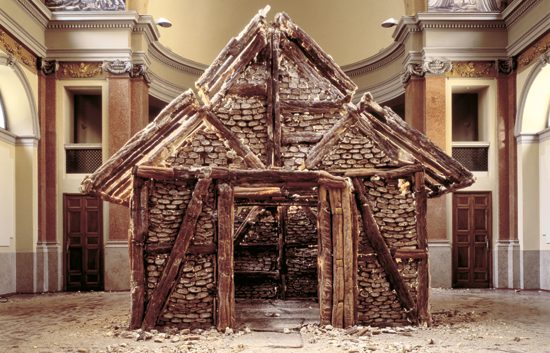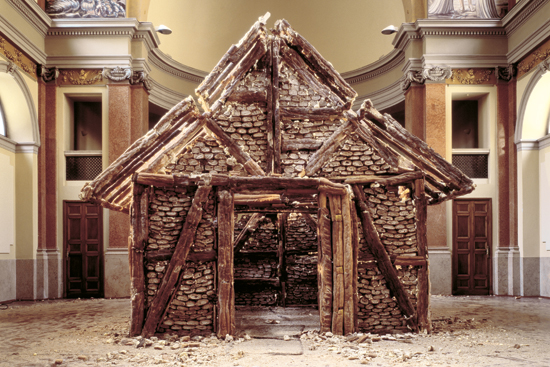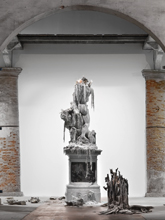Urs Fischer Takes Art History to New Heights


THE RECONSTRUCTION AND DECONSTRUCTION OF ART
Urs Fischer will certainly go down in the annals of art history as a visionary and revolutionary. Take the commonplace, immerse it in a little Fischer, and the result is a startling confluence of reality and imagination.
Works of the Swiss-born artist are currently on display in Los Angeles at the Museum of Contemporary Art (MOCA) and the Geffen Contemporary at MOCA until August 19, 2013, with Jessica Morgan of the Tate Modern in London curating the exhibit. Fischer is showing his works of the last decade and has gathered together for the first time pieces from international collections, tailoring his creations to each space.

Indeed, Fischer has almost taken over all the space at MOCA and certainly has done so at the Geffen, where he had the help of over 1,500 contributing artists. The whole show spans 38,000 square feet in the two museums!
Fischer’s works are both compelling and overpowering: in them, we see a cacophony of art historical references ranging from the Renaissance to the Contemporary. He has, in a sense, rewritten art history and has set the bar very high. Art historians look at several aspects of a work of art: the social, the psychological, and the iconographic, and they certainly will have their hands full with Fisher’s oeuvre.

The exhibit can perhaps be described as poetry moving across construction and deconstruction. Fischer asks us to take a journey with him and not judge by our old vocabulary of what art should be. He brings the impermanence of the human condition into play in his art works: everything is in a constant state of flux.
At MOCA, walls have been knocked down to give the viewer a rare look at the art works en masse. A painting of a celebrity with fruit across his face hints at the fleeting nature not just of fame but of life itself. Is Fisher telling us that we must read the writing on the wall? Then there are 1,500 raindrops, each of which is hung from the ceiling, and, a highlight of the show, a house made of bread, decaying through the exhibit, or is it?

At the Geffen Contemporary, one encounters thousands of clay figures strewn across the floor constructed by 1,500 members of the community, all of whom volunteered to help Fischer fill the space. This is participatory art at its azimuth, and what a wonderful concept it is! The volunteers took great pleasure in this project; I was informed by one of the helpers.
Also at the Geffen, Fischer has sculpted two wax figures (one of a friend untitled) which are timed to burn down with the end of the exhibit.

Born in Zurich, Switzerland in 1973, Urs Fischer has studied and created art all over the world, from Europe to America to Asia. He studied photography at the Schule fur Gestaltung in Zurich, visited de Ateliers in Amsterdam, and was an Artist in Residence at the Delfina Studio Trust in London.
His work has been featured in such renowned exhibitions as Manifesta 3 and the Venice Biennale in 2003, 2007, and 2011, and he had his first major solo exhibition at Kunsthaus Zurich in 2004. He has since shown at the Centre Pompidou and Muse Rodin in Paris, the Blaffer Gallery in Houston, the New Museum of Contemporary Art in New York, the Kunsthalle Wien in Vienna, the Palazzo Grassi in Venice, the Royal Academy of Arts in London, and the Deste Foundation for Contemporary Art in Athens, to mention but a few venues.
The Fischer vision is unique, unexpected, and, finally, brilliant.Be ready to deconstruct and then reconstruct your own conceptualizations as you view the exhibit, just as the artist has done, but is that not what both art and life entail?

